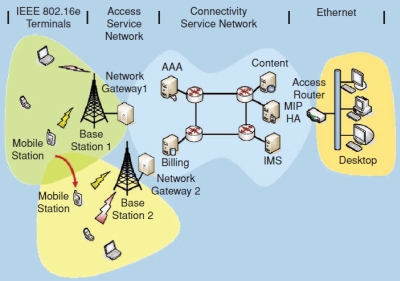TR2006-096
The Mobile Broadband WiMAX Standard
-
- , "The Mobile Broadband WiMAX Standard", IEEE Signal Processing Magazine, Vol. 24, No. 5, pp. 144-148, September 2007.
-
MERL Contact:
-
Research Area:

Abstract:
Mobile worldwide interoperability for microwave access (WiMAX) is a wireless standard that introduces orthogonal frequency division multiple access (OFDMA) and other key features to enable mobile broadband services at a vehicular speed of up to 120 km/h. WiMAX complements and competes with wireless local area networks (WLANs) and the third generation (3G) wireless standards on coverage and data rate. More specifically, WiMAX supports a much larger coverage area than WLAN, does not require line of sight for a connection, and is significantly less costly compared to the current 3G cellular standards. Although the WiMAX standard supports both fixed and mobile broadband data services, the latter have a much larger market. Therefore, this article will briefly present the mobile WiMAX standard, the technologies deployed for the air interface and the network, and the development of the standards to support mobile multihop relays in a WiMAX network.
Related News & Events
-
NEWS IEEE Signal Processing Magazine: publication by Koon Hoo Teo, Zhifeng (Jeffrey) Tao and Jinyun Zhang Date: September 1, 2007
Where: IEEE Signal Processing Magazine
MERL Contact: Jinyun Zhang
Research Area: CommunicationsBrief- The article "The Mobile Broadband WiMAX Standard" by Teo, K.H., Tao, Z. and Zhang, J. was published in IEEE Signal Processing Magazine.
